#mononoke awashima
Explore tagged Tumblr posts
Text
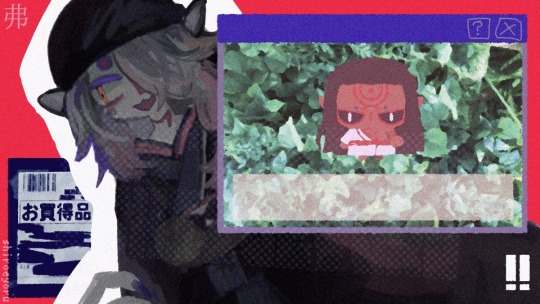
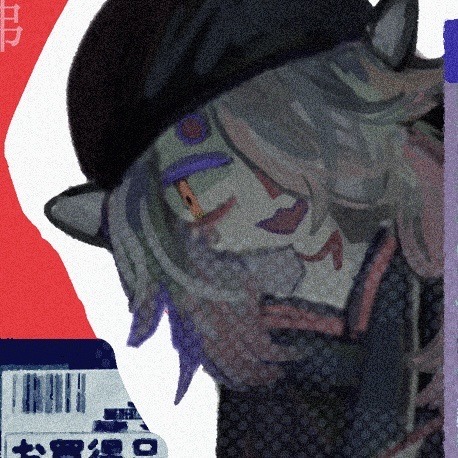
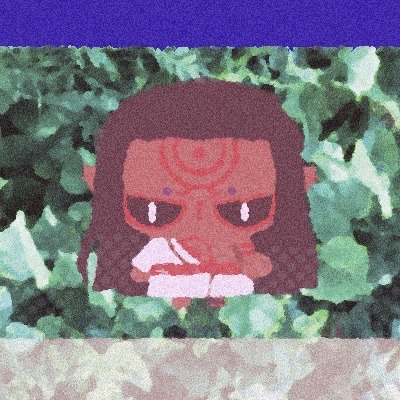



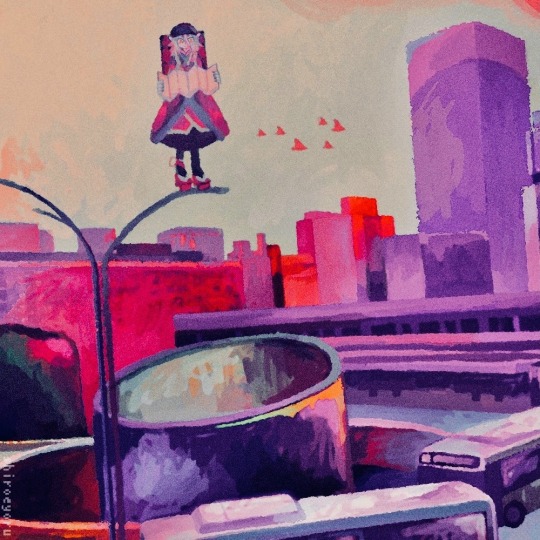
#mononoke#mononoke fanart#mononoke art#mononoke karakasa#the medicine seller#medicine seller#medicineseller#medicine seller mononoke#mononoke medicine seller#shingi#shingi mononoke#mononoke shingi#saburomaru mononoke#mononoke saburomaru#hiramoto mononoke#mononoke hiramoto#awashima mononoke#mononoke awashima#mugitani mononoke#mononoke mugitani#kusuriuri#モノノ怪#モノノ怪FA#モノノ怪_FA#薬売り#神儀#fanart
193 notes
·
View notes
Text
youtube
“Mononoke: Karakasa” The Theme Song, Trailer
The official website disclosed the theme song, and the first trailer for the anime film Mononoke: Karakasa. On July 26, the film is slated to debut in Japanese theatres.
#mononoke movie karakasa#mononoke movie#karakasa#kitagawa#botan ootomo#fuki tokita#awashima#mugitani#saburoumaru tokita#heiki saga#sakashita#tenshi#hokuto mizorogi#anime#anime movie#anime news#Youtube
6 notes
·
View notes
Text
okay but kame and asa are literally 100% in love i don’t make the rules ¯\_(ツ)_/¯
long post overanalysing and yapping about these two lesbians + spoilers for the ‘mononoke: phantom in the rain’ movie! go watch it right now if you can 👹👹
kame is literally asa’s most precious thing. you can NOT tell me it’s not. even if you don’t ship them it is very obviously canon.
asa was soo flustered and didn’t want to tell kame about this, even blushing?? like understandable though it’s basically a confession
one of asa’s first reactions was always to check if kame was okay whenever the mononoke appeared
sure, it could’ve just been a friend thing, but asa was constantly looking out for kame in the ooku
defending her and taking the blame for all her mistakes and trying to protect her from harm, standing up to awashima and mugitani
asa i know what you are i saw that blush when kame smiled after you told her she could work with you instead of mugitani (I get you she was so cute tho)
”Such neat handwriting” asa’s eyes were so soft it actually broke my heart when i saw awashima cutting kame’s hair
the well scene….just…
asa trying to pull up kame, and kame doing the same for her
also asa being sort of lifeless while she hangs there until kame tells her that ‘it’ll be alright!/I’ve got you!’ and suddenly she snaps out of her shock, gaining emotions again
also it was so cute when they were talking next to each other at night
speaking of which, kame making asa promise to not let go while they sleep and asa adjusting to a more comfortable grip while holding hand was just; auGHHH 😩
ALSO ALSO “Kitagawa made me realise what was important, what I should never throw away,” and then KAME TURNING TO SMILE AT ASA AND ASA SMILING BACK WITH THAT ADORING LOOK IN HER EYES?? (note: there was also minor foreshadowing here with the empty doll cupboard but i think that had more to do with kitagawa)
and the cut off after saying she needed to say something important was really suspicious like what did she say??
idk how this related but afterwards she became more focused and hardworking on her job(but also more rigid and firm in her beliefs) and kame tipped out her water instead of drinking it (because she became the opposite? more rebellious/defiant maybe? idk)
speaking to the medicine seller, she said she understood kitagawa’s feelings, which makes me think kitagawa also had a thing for her friend lol like there was absolutely something going on there if she(kitagawa) fell apart after her friend left
only mildly related but i believe karakasa’s next target was probably going to be kame and she was used as bait for it (as something a redditor* mentioned was asa may have sent kame away to protect her rather than the reason kitagawa did, OR lure out karakasa) edit: nvm i remembered wrong it was utayama i believe (due to perhaps resentment within the doll’s umbrella*) or asa (following the logic that awashima and mugitani were both the head housemaids(?) favoured by utayama before asa, although again the end goal was probably to attack utayama)
also when asa was addressing the other maids of the ooku before the birth celebratory ceremony and bowed, kame bowed but nobody else did (which means they didn’t respect asa)
then kame got mad and showed her support for her girl like hell yeah 👏 and asa gained more confidence which i think was sweet
oh and asa was also like “the thing that kept me grounded was lady kame” 🥹🥹
she also said (acc. to netflix subs) “And yet, I yearned for nothing more than to share meals with Kame. And spend countless nights just staying up late, giggling and talking to her.” SHE SOUNDED SO LOVESICK 💔
btw love how the medicine seller instantly knew asa was looking for her boo lmao
anyways i think it mayyy not have been requited on kame’s side, at least canonically, but I have literally zero doubt asa was in love with her. then again homophobes and censorship. uh. it’s alright i ship them very hard either way i need more lesbians in my life hehe.
in conclusion. Harold they’re lesbians. thanks for coming to my ted talk. yeah o7
*redditors talked about the choice of karakasa as the yokai.(i reccomend reading it, it’s very interesting imo)
#they are THE lesbians bro#i was scrolling through the mononoke tag and frankly there’s a criminal lack of talk about them#maybe it’s bc the movie’s still new and the fandom’s small?#what should there ship name be? asame is cute tbh kamasa sounds like kamala lmao#mononoke asa#mononoke kame#mononoke#mononoke: phantom in the rain#phantom in the rain#mononoke 2024#asame#if they were in the modern era asa would absolutely listen to good luck babe#long post#bored’s rambles#edit: apparently their tag is#asakame#edit: woah i did not format or organise this very well. ah well. deal with it lmao
97 notes
·
View notes
Text
My sister wanted to watch the movie with me, so I watched it again last night. The way it stands up to rewatching is incredible. I noticed a few more things.
1. I think now it might have been Mugitani and Awashima who were behind the passing of information about Kitagawa.
2. I finally realized why the Medicine Seller came crashing into Asa's room like that. I feel this was an obvious one, but it's so hard to process things when your eyes are constantly shifting between the actual movie and half-readable, half-in-the-black-bar-subtitles. This was my first proper rewatch with my modified subs. (And of course I noticed some punctuation I forgot to tweak...)
3. Asa and Kame were definitely 100% doing gay stuff while Fuki and Tenshi were doing weird water-related hetero stuff.
4. I might have worked out exactly what it meant that Asa sent Kame away and why she did it.
5. I realized something about Kitagawa and her umbrella that I think lends substantiation to my idea about what was going on with the Medicine Seller and the raindrop at the end.
6. Not really something I figured out but it's interesting how quickly the Medicine Seller and Saburomaru formed an investigative alliance. I suspect they'll be working together in Hinezumi too.
Sister seemed to enjoy the movie more than I expected. Maybe I can tempt her into watching the series. She did ask at the end what a mononoke was, and I realized that the movie never properly explained it. Which is kind of funny given how exhaustively the series explains it. I guess if you're Japanese a detailed explanation isn't required for comprehension, since the word mononoke at the very least conveys "demon."
She definitely picked up on the gay stuff.
73 notes
·
View notes
Text
Observations about Mononoke Karakasa characters & relationships based on costuming & color palettes
Let's guess who these girls' parents are and see where this rabbit hole takes us!
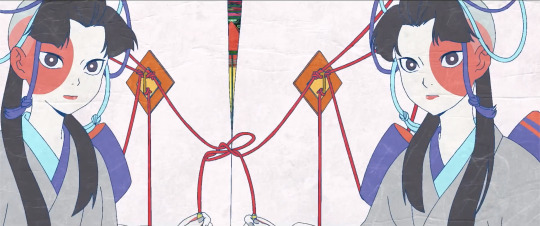
Analysis below the cut! This isn't spoilers as much as it is just going over publicly available information with a fine tooth comb but proceed with caution. Buckle in, this is gonna be a long one!
Based on the color palette of their outfits, these two girls featured in the second trailer at the 0:17 timestamp are the twin daughters of Hokuto Mizorogi (溝呂木北斗) as indicated on his bio on the official website.
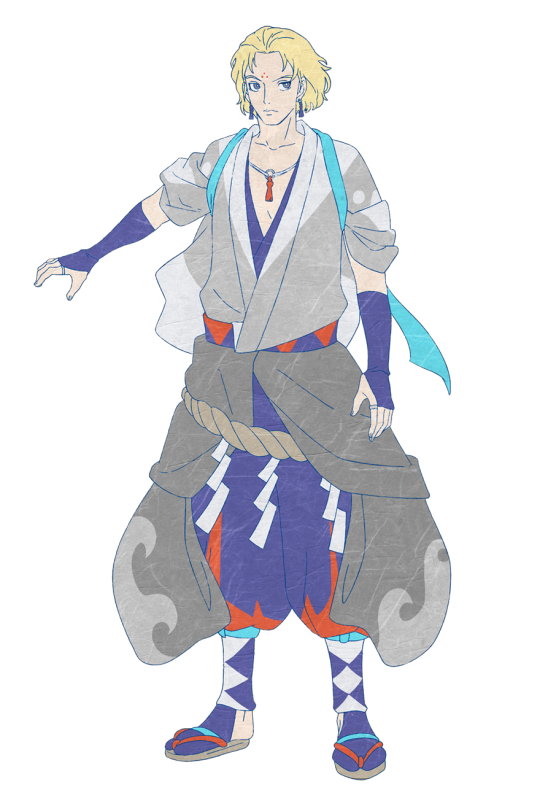
Given Mizorogi's status as priest of the "Omizu-sama" faith, it's entirely possibly he's given special privileges within the ooku to father a child.
According to Japanese geisha culture, their half-painted lips indicate that they are children. They partially shaved their heads is reminiscent of a nun's makes sense given their religious parentage. Two context clues combined, I believe they are priestesses-in-training - a position which is higher than even that of the most favored concubines.
Supporting this theory, these twins have a very high position of power in the Ooku despite their youth, as seen by them being at the front of the procession featured in the teaser trailer at the 0:07 timestamp. They also have uniquely colored umbrellas:

As an aside – given how most of the spiral-masked women are visually identical, uniquely colored outfits are a visual shorthand for status (or narrative significance) in the ooku.
And I believe they are the gatekeepers for the, uhhhh, how do I put this delicately? The shogun's baby-making room? Take this with a grain of salt though; I could only see a sliver of the room they were opening in the first screenshot. The colors seem fairly similar though!

But also consider: this babymaking room has a lot of eye motifs, which is reflected in the pit seen in the ceremonial area where I presume Mizorogi presumably performs his religious services:
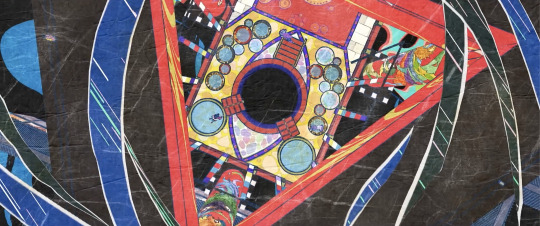
The third trailer introduces the theme of discarding essential parts of yourself. There is a shot of the comb falling into a pool of water in an unknown location:
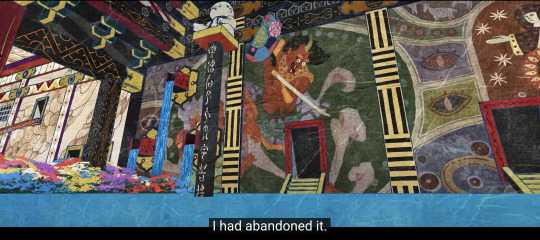
Paired with the visual of the comb lying amongst discarded valuables in the water in the second trailer, I'm going to hazard a guess this is a common "ritual" of sorts:
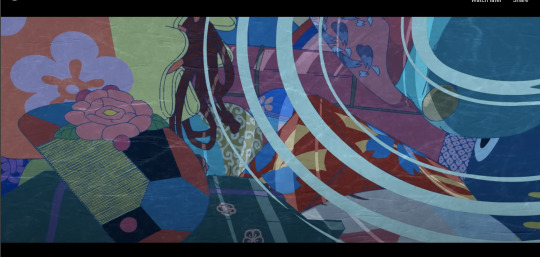
I'm willing to bet Mizorogi enforces this "identity discarding" ceremony on behalf of the shogun. It says in his character bio he's a strong believer of "Omizu-sama". Did he discard his role as a father to step into the role as a the priest?
Their mother may be Kitagawa (北川), a high ranking maid within the Ooku.

The twins' hair and eye colors look similar enough, but there's more meat to this theory. Kitagawa seems to be a narratively important character based on how heavily she's featured in the trailers in increasingly angsty/mysterious ways:
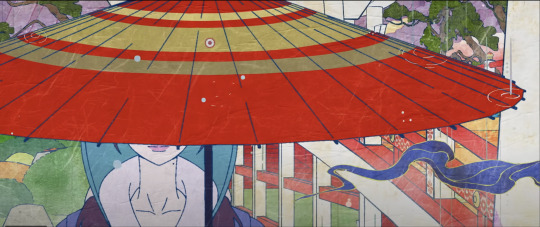

Perhaps Kitagawa "gave away" her motherhood to the waters, which has religious baptism connotations. This hypothetical scenario feels rife with mononoke-formation potential.
Furthermore, from costume design standpoint, she also shares the blue and teal colors featured in Mizorogi's outfit.
As for her purple accents, I believe it is a color reserved for the higher-ranking women of the ooku.
I have a theory that the darker a color is, the higher the status is. Consider:
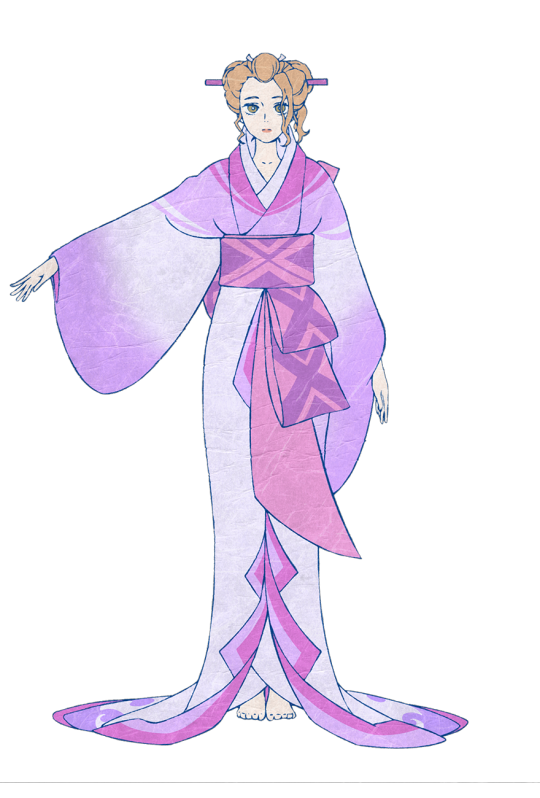
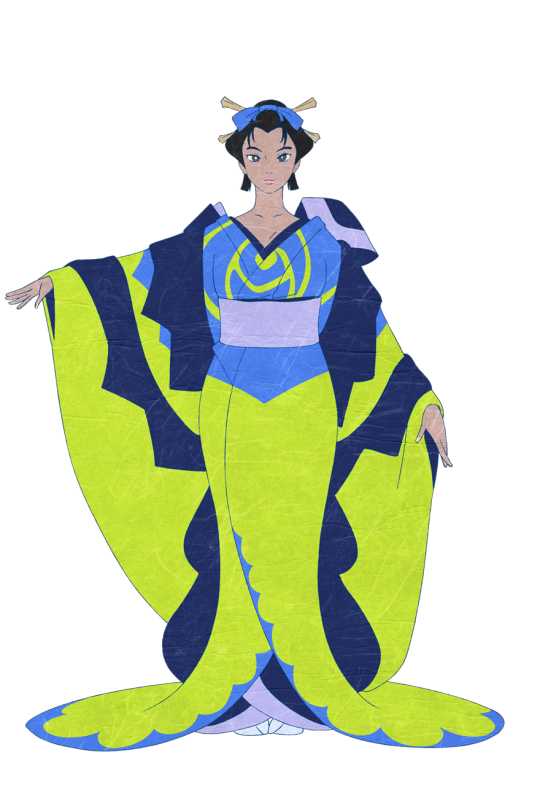
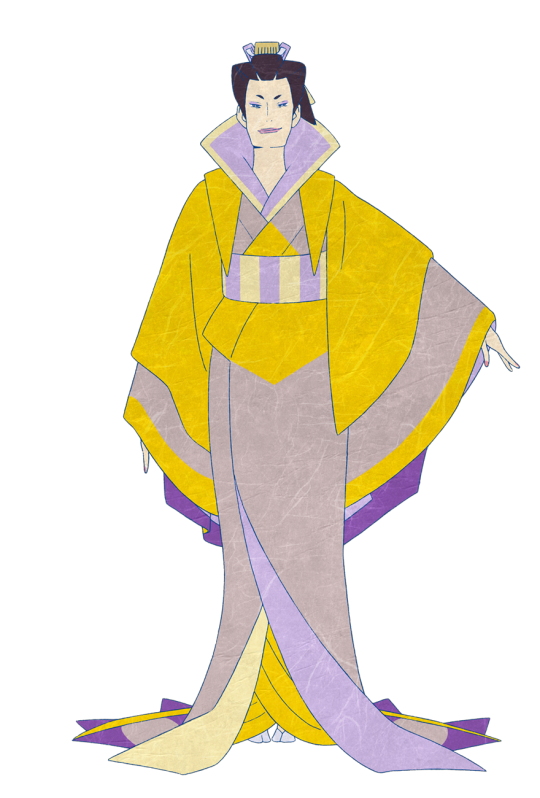
Asa (Left), who is a new maid but has a lot of potential for upwards mobility.
Tokita Fuki (時田フキ) (Center)), a lowly commoner who caught the attention of the shogun. Because she's a commoner, the purple is faded despite her high status, perhaps representing that it will disappear once she loses the shogun's favor. But because the rose pattern is almost a one-to-one match to that of Mizorogi's, perhaps she is strongly favored by this man as well.
Awashima (Right), the subordinate of Utayama, who is falling out of favor as Asa rises in prominence. There are still pops of dark purple, but a washed out lavendar permeates her palette.
Both Tokita and Awashima also have highly saturated yellow/yellow-greens, which could represent potential danger of their power disappearing due to outside influences.
As for the deeper purple...

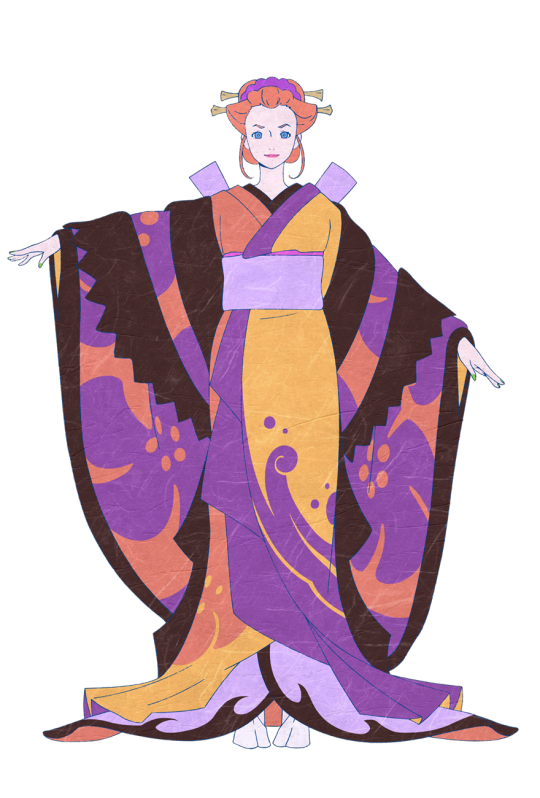
Otomo Botan (大友ボタン) (Right) - a lady in waiting and daughter of a high-ranking senior councilor. Note that she also has pale purple in her palette because her high status was not earned. Because she borrows power from influences outside of the ooku, the black accents are represent that she has more power than even Utayama, the most powerful woman within the ooku.
Utayama (歌山) (Left) - the woman with the highest position of the Ooku, "Odoshiyoroshi". She is also prominently garbed in red and white, which is a color seen in the shogun and a little bit of Mizorogi's outfit:
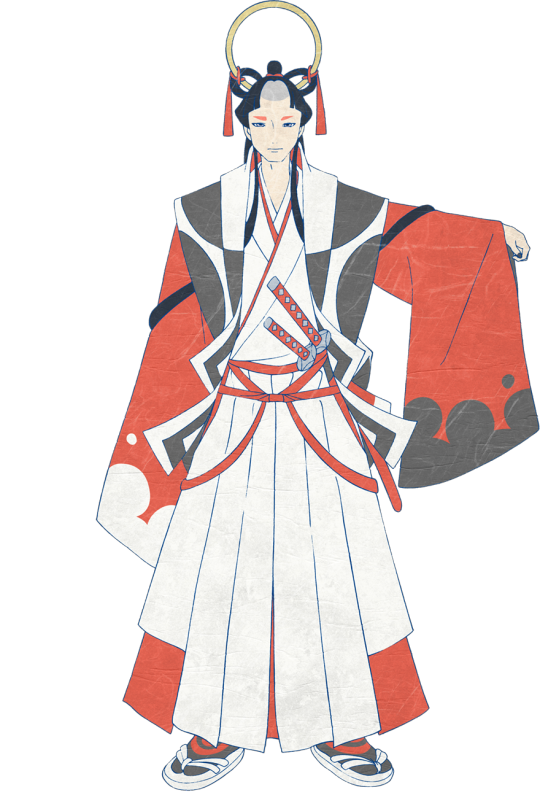

Lighter shades of red (i.e. pink) also seem to indicate men of lower status that still have some position of power, like these guards:
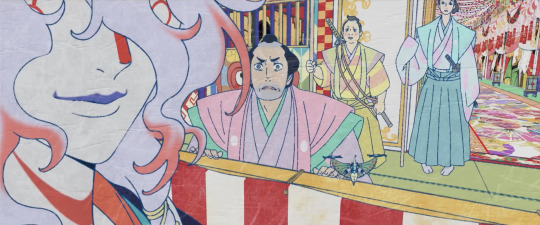
Note that Kame (カメ) (Left) and Mugiya (麦谷) (Right) also possess these "masculine" colors which may indicate that they have more forceful personalities compared to other women within the ooku:
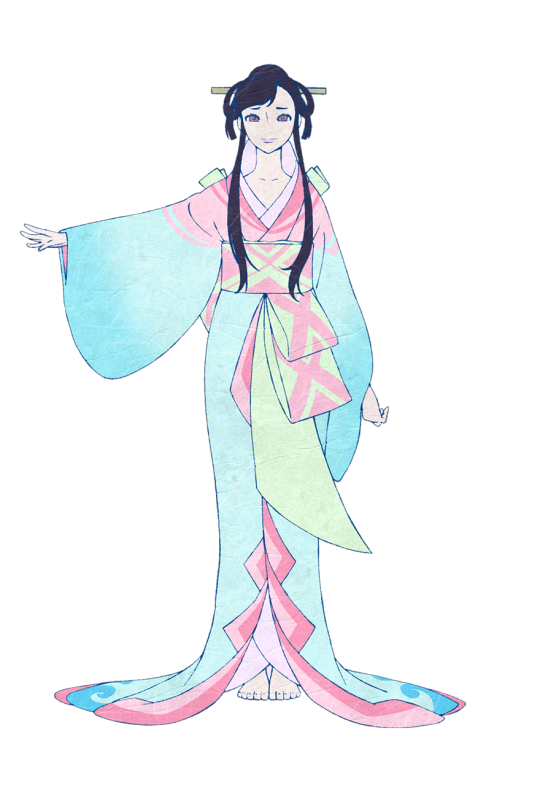
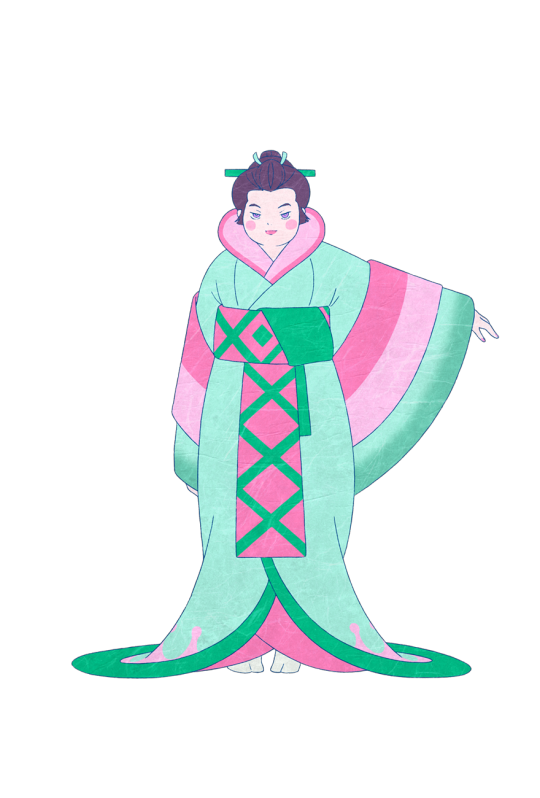
Their respective outfits also have analogous shades close to the blues prominent in Mizorogi's outfit. Assuming blue has religious connotations (akin to Virgin Mary), perhaps they are also strongly faithful to whoever this "Omizu-sama" entity is.
Meanwhile, Asa also wears pink, but does not feature any blue in her outfit. I think may represent her lack of faith. She does seem like a more levelheaded individual not easily swept away by more dazzling aspects of mysticism.
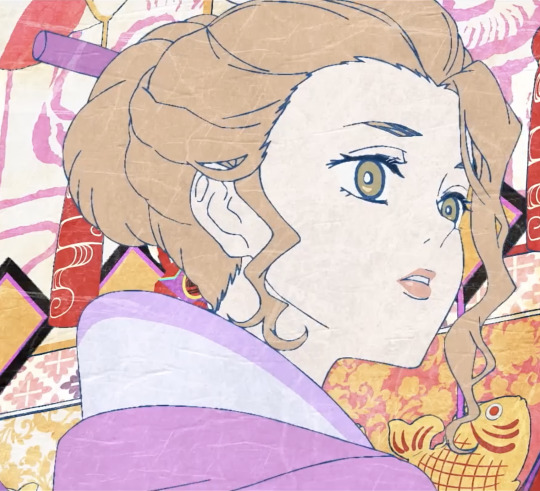
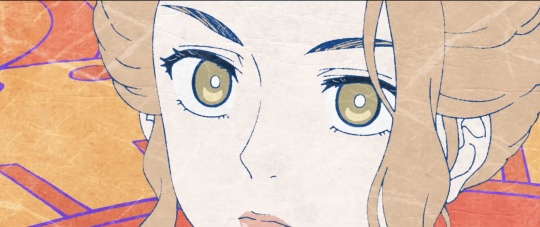
This is the look of a woman who not only has a braincell or two, but has it on her person at all times.
Now let's look at our main protagonists!
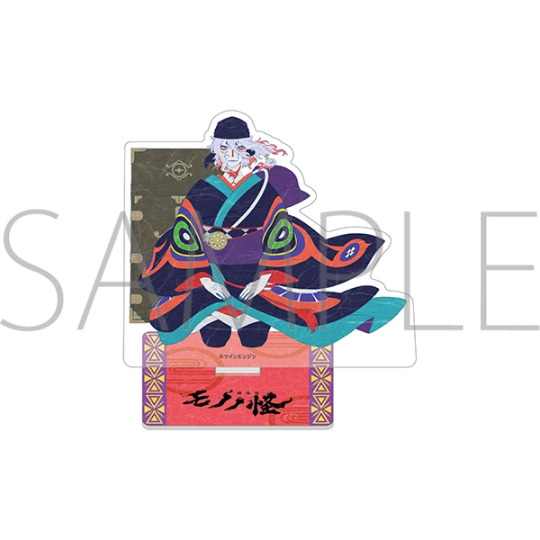
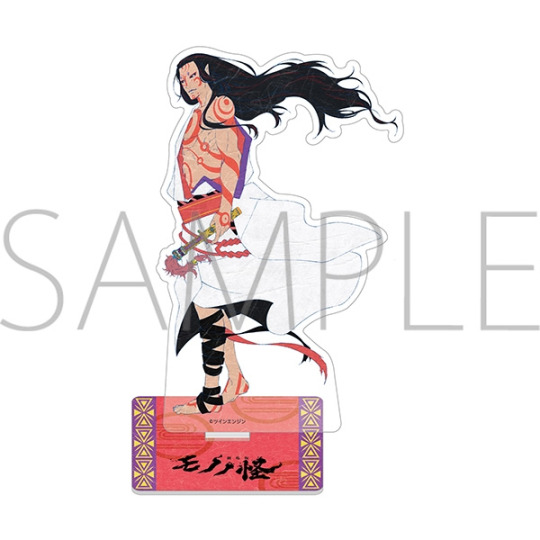
Kusu features red and purple color accents in his outfit, which makese sense for his gender ambiguous presentation. You could say that the other colors featured in his outfit represent how the influences he collects by interacting with humans. Black is also featured heavily as the canvas for these colors. As mentioned earlier, this represents influences outside of the ooku.
In contrast, Shingi while sports both the masculine red/white and feminine purple colors of power, the latter definitely eclipses the former which matches his masculine presentation. His outfit also has black, but because his influence in the world comes in bursts during exorcisms, it is featured less prominently than Kusu. His disheveled look may represent his discarding of these superficial societal norms. His power - symbolized by red - need not be worn. It is already tattooed onto his skin - literally.
The only other characters that have red tattooed onto their skin are the twins from the beginning of this post. Come to think of it, their partially shaved look may also be a nod to the shogun's power - indicating that their very existence is divinely approved by him. So we come full circle!
So, yeah! Although these twins don't have an official bio, there's a lot to learn about them and others from extrapolation and inference alone!
In summary:
Red/White = Masculine/Divine power
Blue = Religious power
Purple = feminine power
Yellow = danger of power loss
Light colors = weak influence
Dark colors = stronger influence
Thank you for coming with me on this long diatribe!
91 notes
·
View notes
Text
Mononoke Movie
I wasn't sure what to expect with this movie, but the fact I dove down a rabbit hole of potential lore, including the different medicine sellers, was not it. The surprises are pleasant, but I truly wish to know more. This character and series has me invested now.
I've already talked some about both Ayakashi and it's Spin-off Mononoke. If interested on my thoughts, mostly about Mononoke, you find it here (beware some spoilers). If not, long story short - I thought Ayakashi was alright, I thought the Bakeneko arc was the best arc, then watched Mononoke, and now here I am, lol.
Disclaimer: Spoilers for the first Mononoke movie - The Phantom in the Rain. However, there will be little to no spoilers concerning Ayakashi: Samurai Horror Tales and Mononoke (2007). Also note, when I say original series, I mean Mononoke (2007). When I mention Bekeneko, I specifically mean the arc from Ayakashi.

So, yes, this thing. First off, I am very happy they kept the animation style and look of the original Mononoke series. The style of the 2007 series was one of the reasons my interest was peaked in not only looking into Mononoke, but also watching Ayakashi as whole (even if I've heard people say you only need to watch the bakeneko arc for that).
This style is still beautiful, they kept the vibrant colors and lines, and even the paper textures. They didn't have to do all that, especially for something that was from early 2000's, but they did and the dedication is appreciated. However, it is a little different from the original. The colors seem much more vibrant and bold, whereas in the 2007 series and Bakeneko they had a more muted tone. I'm not surprised by this given how much older the original series is (almost 20 years old, huzzah -_-), so it was probably just limitations back then. Granted, even then the original series was still very colorful and bright with its colors. This is just an observation, though, not a nitpick. It is more or less the same visual style.
Before I point out the elephant in the room, or rather the seller, let me just touch and talk on the main story a moment.
Much like the original series, the movies touches on some fairly dark themes. Despite the rating on netflix being 14+, this movie takes place in an Ooku, a place where many women are gathered to be concubines for the emperor. Okay, there's actually a lot more to an Ooku than that, but it's a lot of information and I tend to ramble enough as is, so I won't get into it here. Just know that's what the basic function, at least, became by the time period the movie takes place in.
A number of the characters were very interesting here, especially when we are given glimpses of what the other women in the Ooku gave up before working there. The dynamic between Asa and Kame is very interesting. I like how at first, Kame was willing to give up what's important to her for a chance at a better status, but Asa wanted to hold onto what was dear to her. The fact this got turned around at the end was an interesting development, and I wonder how that might affect them later if we see them again in the second movie. Mugitani and Awashima giving up a ball and kaleidoscope respectively make me wonder what they were like before the Ooku. Clearly they were characters with a more carefree lifestyle, so in a way it's sad to see them lose themselves as they did.
I wish we'd gotten more about some of the other side characters, such as Fuki, Saburoumaru, and even that Hokuto man, but I suppose I'll have to wait for the next movie.
The horror elements, while a bit toned down I feel compared to the original series, are still very catching. This movie was definitely more geared towards action, but I thought that was fun. Especially seeing Kon Kusuriuri in action. The animation was stunning, and the scene where the characters were falling down the well was a great way to display how they had all let go of something valuable, important, but Asa hadn't lost everything yet. I loved Kon and how he first, uh, "subtly inserted" himself into the Ooku. Yes. Very subtle. I don't even think Ri could be more subtle than that. Nope.
Oh, yes, the local medicine seller.
So, apparently, this medicine seller is different from the series medicine seller (Kon and Ri, respectively). It's a whole thing, and hopefully it'll be better elaborated on in the next movie or even the third, but I found nacch-an's crash course post very helpful, they even have links to source material for extra learning! (Thank you! I really liked this post!)
As far as this medicine seller goes, I like him. He's clearly got energy and seems rather playful, or more openly playful than Ri, lol. I like his design and the moves he pulls are very eye catching. However, I think I still like Ri more, if only because his whole attitude is a mood and I feel for this man. It's also because I haven't known Kon long, and I might become more attached by the second movie. However, he seems to be a bit more energetic than Ri so far. He's certainly a little more loud, lol. I feel like he's a bit more of a little shit, though Ri had his moments in the original series and bakeneko.
Overall, I thought what the movie was going for was great, but I'll obviously have to watch the next movie and, what I believe, is supposed to be a third one, to get the whole story. Not that I mind.
A part of me is sad that I didn't know about Mononoke before, back when the original series released. However, I don't know if my younger self would have like it the way I do now. Ah, well. I've seen it now, and I am definitely going to see this ride through.
#mononoke 2024#mononoke karakasa#kon kusuriuri#kusuriuri#anime#movies#anime movie#animanga#It's late for me but I wanted to get this done lol#this draft has been sitting for forever#the next movie is this year too#so happy
10 notes
·
View notes
Text
Zaverick Wondereviews Episode 39:
Mononoke Karakasa
TW: THIS REVIEW IS INTENDED FOR MATURE AUDIENCES + Spoilers + unhinged behavior?
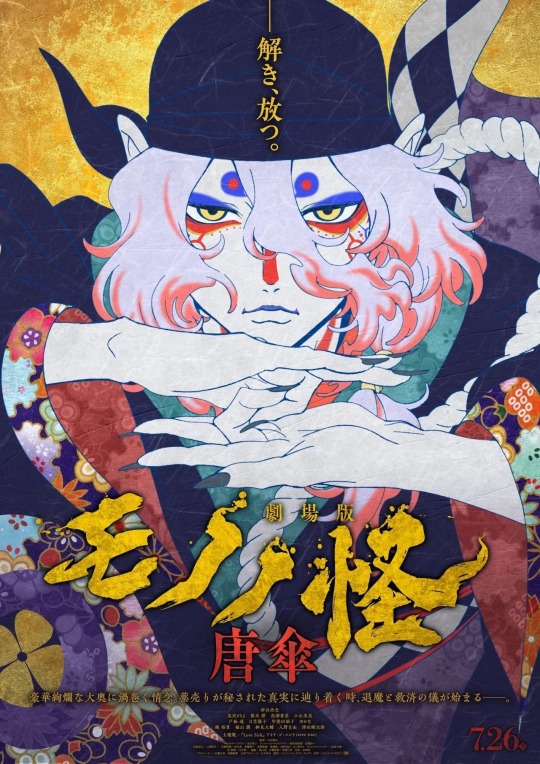
Studio: EOTA (this is the only thing they’ve worked on not making any of this up)
Pros:
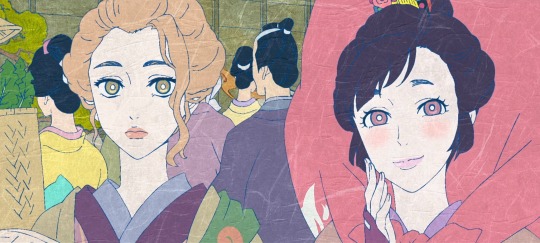
⭕️ The animation is just absolutely colorful and nothing has been muted or washed out
⭕️ The characters are all likable (except for Mugitani and Awashima because they treat Kame like ass)
⭕️ Kame is relatable and such a precious little babu but dear lord did she become relatable very quickly
⭕️ The dub was really good and I will defend Crispin Freeman’s performance of the Medicine Seller
⭕️ Speaking of Medicine Seller, I love his shitty antics and passive personality so much in this movie and I’m glad that they gave him more energy
⭕️ Sakashita is just as enjoyable as both Odajima and Genyosai were in Ayakashi and Mononoke
⭕️ I was very happy to see Utayama’s downfall solely from Kitagawa alone (I also wasn’t surprised that she was going to be the big bad for the first movie)
⭕️ That fight scene was absolutely insane and had me on the edge of my seat and the magical girl transformation was just amazing
⭕️ Love Sick is such a banger song
Cons:
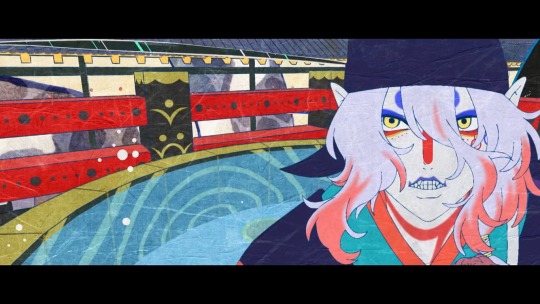
❌ It is not recommended for newer fans of the series to dive into this right away
Score: 10/10
Final Thoughts: When will we ever get that love potion? Maybe next film?

16 notes
·
View notes
Text
some thoughts re: the gay
so the only heterosexual scene we see is with the emperor and a concubine and their only physical contact is holding hands
asa and kame are shown holding hands a number of times, specifically during happy and emotional scenes
considering the ooku is forbidden to men and out of the 2000 women only 8 are actual concubines for the emperor you have to wonder how many are there to catch his eye like kame, how many are there to work and find meaning like asa, and how many are there because they dont want to get married
kame wants to catch the emperors eye not because she loves or even admires him, she states herself she just wants to wear fancy clothes and have status
obviously asa knows this so what does she do when she sends kame out from the ooku? she gives her a golden hair comb in exchange for the one kames grandmother gave her. regardless of where kame goes she will have that golden hair comb signifying that she either knows someone exceptional or is exceptional herself, or she can sell it for a LOT of money. kame was not going to be happy in the ooku in any way and this gave her freedom
also irt asa sending kame from the ooku: those dead bodies in the well temple are girls who were in the same position as kame. they "left for their hometown" but were actually thrown to the well as someones elses most precious thing. we never learn what utayama threw in the well. I'm guessing it was another girl like what asa was on the path to doing until kitagawa stopped her
awashima was so scared by the kaleidoscope because she knew that there were girls thrown in the well. along with her first precious thing. karakasa was telling her "you know. you did it. you are guilty" and we see her throwing down mugitanis body without hesitation as well
kitagawa almost directly states that she did the same thing and in doing so became so overcome with guilt and depression she committed suicide
so form: kitagawa (or her doll more specifically)
since asa says that kitagawa held no grudge I think she just happened to be the "consciousness" so to speak as her death being the most recent leant the mononoke enough power to to form. the resentment comes from the others who were probably bullied by mugitani and awashima which is why the karakasa "defended" kame and killed them first as well as above
edit: FOR KARAKASA the water goddess is a whole other creature
reason: the resentment of the dead
truth: the girls discarded as precious by their loved one who was moving up the ranks as well as bullying by the higher ranking women
the mononoke movie is about how women love and hurt each other
8 notes
·
View notes
Note
Reisaru "Princess Mononoke" scenario? ( ´ ▽ ` )ノ
Ooh yes, I love the mental image of Fushimi in San’s clothes. Likesay Munakata’s the prince of a small village, one day they getattacked by this creepy demon and Munakata has to kill it. In doingso however his arm is caught in the corruption and he ends up cursed,his arm turns discolored and maybe there’s like a scar that looksvaguely like a sword that starts near his shoulder and will slowlycreep down his arm the worse it gets, when the scar reaches his handMunakata’s body will be consumed entirely by the curse and die.Munakata’s not pleased about that and decides he has to leave hisvillage in order to keep them safe from him, he also decides tofollow the track of the demon in order to find the source of thecorruption. He brings along only some clothes and a few spare puzzlesbecause he needs something to do on the trip okay. Munakata’swandering around following the trail when he ends up hearing storiesof a forest spirit called Dresden that has great powers and may beable to fix the curse on Munakata’s arm. Munakata goes to investigateand ends up running into a battle between some of the people fromnearby village Homra and the wolves from the Scepter forest nearby,led by wolf god Awashima. Munakata is surprised to see a human ridingon one of the wolves, who fights using a variety of crude homemadeknives that go flying at the enemies with too much precision for thiskid to be some random wild foundling.
Munakata ends up helping the Homra guys to escape but only because hedislikes doing nothing but watching what he feels could be aone-sided slaughter, the Homra guys are pretty vocal about theirannoyance that Munakata thinks the wolves would have beaten them.Munakata asks about the young man riding with the wolves and theHomra guys all look displeased as they explain that was Fushimi.Fushimi maybe used to be a person who lived in the village with hisshitty dad Niki, one day Niki took fifteen year old Fushimi for awalk near the forest and then never returned. The next time they sawthe wolves however Fushimi was there and there’s a lot of unrest inthe village about his presence, people thinking that he’s a traitorwho turned his back on humans in favor of wolves. Munakata has thembring him to the village head Mikoto, who totally recognizes Munakatafrom some time in the past when he used to be a wanderer, Munakatanotes that such an efficient town seems a poor fit for the lazyuncouth man he remembers. Mikoto just shrugs and says that it keeps aroof over everyone’s heads and food in their mouths.
Munakata asks around the village after that and finds out that beforethis Homra was like a bunch of wandering homeless kids, Mikoto tookthem in and made the village so they would have a place to call homeand a family to take care of them. However this has put them inconflict with the gods that live in the forest and there’s constantbattling between them, Fushimi’s defection only made the rift growdeeper and maybe things have really escalated recently when one ofthe other village heads, Totsuka, went to retrieve something from anearby town and was killed on his way back, there were no teeth markson his body but the villagers believe that the wolves killed him.While he’s doing his investigation Munakata ends up running intoFushimi, who’s infiltrated the village in order to kill Mikoto.Munakata asks him about Totsuka and Fushimi’s eyes seem to waver fora moment before he says they had nothing to do with that, Totsukadidn’t have any power and it’s Mikoto that they’re after. Munakatawonders why Fushimi would go to live with beasts, noting that heseems to be an unexpectedly talented person, and Fushimi just clickshis tongue and mutters that humans are worthless and he would ratherbe a wolf. Munakata says that if the wolves didn’t kill Totsuka whyare they still attacking the villagers and trying to kill Mikoto, asa former member of the village Fushimi should know that they aredoing what they must to survive. Fushimi darkly says that nothing canlast forever and the village is going to be swallowed up by theforest eventually, they should accept that and leave while they can.
While the two of them are talking some of the villagers catch sightof them and someone raises the alarm. Fushimi attempts to go afterMikoto anyway, who doesn’t seem all that angry at the sight of himand instead just kinda smiles a bit as he’s like ‘Fushimi, huh. Youcame to kill me?’ Munakata is surprised that there seems to besomething almost regretful in Mikoto’s voice and he decides tointervene, stopping Fushimi. Munakata himself ends up getting injuredby a stray bullet intended for Fushimi, even so he drags a veryannoyed and protesting Fushimi out of the village. When Munakatafinally collapses Fushimi calls him an idiot and says that he shouldjust leave Munakata there to die, Munakata laughs a bit and notesthat he was correct in his original assessment, Fushimi is indeedsomeone filled with unexpected talents. Munakata blacks out and whenhe wakes up he’s healed, sitting by a lake with Fushimi next to himlooking irritated. Munakata is pleased Fushimi went to such lengthsto help him and Fushimi coldly says that he wasn’t helping Munakatahe just thought it was stupid to let someone who’s not even one ofthe villagers die. Munakata tries to talk to him a bit and ends uplearning that Fushimi was indeed once a member of the village andthat he basically lived under the thumb of his asshole dad and no oneever tried to really save him, not even Mikoto (and maybe whatFushimi doesn’t know is that Mikoto did try multiple times, and thatwhen Niki and Fushimi left the village that final day it was actuallya mission intended just for Niki so that he could be killed andFushimi could be free). Niki dragged Fushimi out on some errand oneday and they were attacked by wolves, Niki threw Fushimi to them sohe could make his escape. The wolves, disgusted by this act, killedNiki and spared Fushimi, making him one of them.
Meanwhile back at the village some creepy wandering merchant guyknown as Colorless claims he has proof that the wolves killed Totsukaand he convinces Mikoto to send his people to war against the gods ofthe forest. Mikoto’s wary but his people are fired up enough that hefigures they have no choice and they start marching on the forest.Munakata wants to stop them but Fushimi doesn’t give a fuck, he’sfine if all the humans die (except maybe one Yata Misaki who Munakataalso spoke to in the village and who seemed more hurt than anyone byFushimi’s 'betrayal’). Munakata convinces Fushimi to at least comewith him while he tries to talk sense into Mikoto, as they’reapproaching the lake where the forest spirit appears Mikoto ends upmeeting them from the other side. Munakata tries to calm him downwhen suddenly the Dresden spirit itself appears. Colorless shows upfrom out of nowhere, having been planning all along to use thisdistraction in order to take the magic stone in the spirit’s head(and having killed Totsuka for this reason as well). Removing thestone causes a great upheaval in the land, enough that it seems asthough there’s a giant crater swallowing up the ground. Munakata goesafter Colorless and almost gets killed by the shifting ground whenFushimi saves him, acting like it’s such a bother but he’s decidedhe’s not letting Munakata die either. The two of them end upretrieving the stone and saving everyone, in the aftermath Munakatabrokers peace between the town and the forest and convinces Fushimithat his place can be in both the forest and the town, he isn’t anoutcast but actually someone who simply belongs to many families (andhopefully belongs to Munakata most of all, which makes Fushimi scoffeven as he doesn’t deny it).
#reisaru#Talking K#oops that got long ^^;;#okay but Fushimi in San's clothes though#he would look so good *^*#and riding on the back of alphabet squad wolves#Awashima doesn't die in this AU though bc I said so#no one dies except Totsuka bc Totsuka always dies#sorry I don't make the rules
21 notes
·
View notes
Note
Thinking 'bout the fact Kon Kusu didn't really have to stop to talk to Awashima yet he did anyway.
He saw someone freaking out and took a moment to soothe her, ask questions before continuing his hunt.
It's little things like this that show Kon's care for humanity.
Maybe it's the darkness in my soul, but I saw him doing that and and figured he was trying to learn something about the mononoke, like Ri Kusu here:


But it's Kon Kusu, so yeah, he probably was checking to see if she was okay. It's evident what Nakamura meant when he said this Kusu is much more interested in people. I like my hardass, detached Kusu, but I like sweet, protective Kusu too.
#mononoke#karakasa#catch this guy gleefully terrorizing three ghosts#he will gleefully terrorize sakashita though
75 notes
·
View notes
Note
(i cant stop yapping about Asakame please help me-)
Do you think every illustration in the Fusuma/Shoji doors decorated in the Ooku means anything to a scene? I saw in the Fire Rat trailer when the woman meeting is held the door was a tiger, it sort of gets me on a "cat-fight" between them. And will the final boss of the trilogy be a snake? Since the first ever teaser for the movie had snakes on them
(trying so hard not to mention when Asa said what kept her emotions on ground was Kame the scene had her place beside the WHOLE panel illustration of the Fox Wedding door and the fact that a foxes wedding is associated with sunshowers)
By all means keep posting about Asakame, I love it!
Given that it's Mononoke, the Symbolism and Metaphor show, I do think every piece of door and wall art has meaning. You can also see that there are tamari balls bouncing around on the wall of Mugitani's room (a tamari ball being the object she threw into the well).

I'm not sure what the meaning of the tiger would be. It looks like it's trying to get in, so maybe it symbolizes the rage of the mononoke trying to break through?

That's a good thought about the snakes... There is a snake youkai called Uwabami that's known for its gluttonous nature. It also once called down a huge rain and flood on a guy who ticked it off, so there are possible connections with the Kun Trigram (connected with the stomach) and with the Karakasa. Another is Yamata no Orochi. I remember someone suggested when we first saw the art that it was reminiscent of the Yamato no Orochi legend.
Snakes are also symbols of life, death, and rebirth, and in Buddhism they're symbols of the poison of hatred or anger. In the first "Bakeneko" arc, there are snakes on the walls behind Lord Sakai and his son, along with a red thread, which is a symbol of fate.

I think part of the Nue looks like a snake as well? It's quite possible that the final mononoke could have a snake form.
The fox wedding thing... Yeah, they may well have been going straight for the lesbians thing there. 😛
A couple other things I noticed about the walls in Karakasa:
The three "eyes" of the mononoke sometimes appear on the images. For example, they're in the eyes of the flamingos on the wall when Awashima cuts Kame's hair. It's notable, I think, that when those "eyes" appear on images and objects, they tend to stay put for a while, whereas when they appear in human eyes, they vanish quickly.

Also, the art is sometimes animated. When Kame is talking about wanting to become a concubine while Mugitani is giving them "the tour," the puppies playing on the wall are blinking.

In these shots where the wall art appears to be alive, I think it's connected to the idea of life existing in objects, like the objects the women threw into the well, which carried parts of themselves.
And of course there are flowers everywhere, with the idea of the women themselves as "flowers" being a big theme in the movie.

Kusu also has a mischievous little kitty and a demon behind him here, so make of that what you will. 😛

That same wall also has a kappa on it right above the cat. The kappa is an aquatic ayakashi, so that's a probable connection to Karakasa's rain/water theme. According to yokai.com, they're also "a kind of water god" in Shinto.

I'm sure there's a ton more that others who have seen the movie more times than I have, who are more observant than I am, and/or who are better versed in Japanese culture than I am have picked up on. But yeah, all that wall art is important for sure. I'd say all the wall art in the series is important as well, but that's a whole other post.
38 notes
·
View notes
Text
Analyzing the literal meanings of the ooku women's names

It yields rather fascinating insights on the women's relationships with one another! My thoughts are below the cut:
🏔️Senior Leadership:

🗻Utayama (歌山) = Singing Mountain
I wrote an entire post talking about how her name may foreshadow her fate in the ooku.

🏝️Awashima (淡島) = Pale Island
As Utayama's subordinate, it makes sense that her name is also earth-aligned. However, islands are surrounded by and perpetually eroded by water. This could symbolize her influence in the ooku disappearing as Asa rises in power.
🌾Mugiya (麦谷) = Wheat Valley
A plot of sheltered land that is made to grow annually harvested crops. Valleys exist in between mountains, which symbolizes her secure position in the ooku (as opposed to Awashima), but also signifies her lowly status in the upper rankings. She has a connection with wheat, a crop, which is a nod to her job as the senior maid in charge of "nurturing" Kame and Asa's training.
---
🌸Ladies-In-Waiting (Tenshi's Favored Women)

From the looks of it, Tenshi seems to have a taste for "exotic" women.

🌺Otomo Botan (大友ボタン) = Big Friend Peony
I think she is very loyal and protective to whoever she considers her friends, hence "big friend." I suspect since she shares similar color palettes of purple and black, Utayama is her close friend. Peony is considered the "King of Flowers", symbolizing nobility and wealth. This makes sense given her being a daughter of a senior councilor. A flower is considered a luxury rather than a crop, which contrasts strongly against the next person...

Getting some mean girl vibes with Fuki - she always seems to be escorted by two other ladies in waiting.
🍀Tokita Fuki (時田フキ) = Old Countryside Butterbur
"Countryside" reflects her status as a commoner. Butterbur is a plant, which in preparation for consummation (and I use that word in every sense of the meaning) is often soaked in water to remove its harshness/astringency, which I believe symbolizes distancing herself from her humble origins. Hmm, that sounds similar to a certain omizu-sama ritual....
---
🌱Maid Servants:

Not really beating those fetish-for-exotic-women allegations, Tenshi. Or maybe the ooku's just an equal opportunity employer.

I see that Asa's also an appreciator of pretty hands!
🌻Asa (アサ) = Cannabis....?! Morning Glory
(Wait – is this where all the weed and marijuana mistranslations are coming from?!?!?!) Based on her color palette, I think the would be a nod to morning glory (朝顔) - asagao - which bloom with the rising sun symbolizing her rise in power. She also shares the same flower symbolism as Botan, which makes me think she may come from a somewhat privileged background. Her plant namesake makes her a individual under Mugiya's care Unironically, maybe the weed/cannabis thing might be deliberate. Asa seems like a very level-headed woman who is calm (from imbibing in narcotics???) even in the face of danger (the mononoke). This may also give her some some sort of connection with Kusuriuri, who we saw interact with her in the trailers - or at the very least be in the same space as her.

🐢Kame (カメ) = Turtle
Turtles are associated with the ocean which thrive in open and wild waters. But turtles must first hatch on the beach (ooku) and make a mad dash from the sandy shores to the water(freedom). I think that Kame, living in the ooku, is essentially an awkward sea turtle trying her best to thrive in a freshwater koi fish pond. She's the only maid servant with an animal-aligned name amongst the plant-aligned names, so she sticks out like a sore thumb. And hmm, don't turtles actively eat plant life too...?

🌊Kitagawa (北川) = North River
Hokuto Mizorogi (the water priest) is associated with the Big Dipper constellation, the "ladle" of which is often used to point to the North Star. I believe she and Mizorogi have some unspoken history together. I theorized in this post that she may have birthed his twin daughters, Mikadzuki (三日月) and Futsukazuki (二日月). I'll write up analysis on these girls in a separate post - this one's getting a too long. Kitagawa's name is interesting in that like the senior leadership, it represents an element: the embodiment of water. It gives her an illusion of power in the ooku, but at the price of washing away the important parts of herself. I wonder if she was once in Asa's position, and had to discard a Kame-like friend as the steep price to reach her position of power...
33 notes
·
View notes
Text
Unearthing more of the Karakasa's terrifying powers ☂️🌊💀


In this above scene, Kusu himself says that this withered corpse is a mononoke's doing. What are the implications of this?
Potential spoilers and plot predictions below the cut!
Based on the corpse's outfit and fingernail color, I am fairly sure that Mugiya, the short Yahei-coded senior maid, is gonna be the first real casualty of the Karakasa.


Or at the very least, someone who's very close to her will die, given the color coordination. But the identity of this corpse is not the point of this analysis!
The point is - this is a manifestation of the Karakasa's power. It is ritualistically fed things that are important to the ooku's women, until they are hollowed husks of their former selves:

But even after this, these women still one more "precious" thing they have yet to feed to the waters: their beauty and desirability. These are also the only aspects of the women that Tenshi values.
When the Karakasa was finished with its first unfortunate victim, all that was left of her was a withered corpse. Ugly. Undesirable. Stripped of these aspects, a women would be utterly useless in the eyes of the ooku.
If the Karakasa was birthed from the women's grudges, perhaps its actions is a form of retaliation against the ooku. These women are upset that they have to abandon vital parts of themselves for the sake of one man, Tenshi, who might notice them. Given the vast majority of them are lowly maids, the chances of that happening are infinitesimally low.
In the latest trailer, the ooku is hosting a big festival, one that even commoners are allowed to participate in.

If I were to hazard a guess, it is a ceremony in which Tenshi chooses a woman to bed with to conceive his heir.

The women in the grey ponchos are Tenshi's favored candidates. Save for Fuki, who's a commoner, they all likely came from aristocratic backgrounds. With Fuki in the midst, perhaps there was hope amongst the maids that a person of their lowly status had a chance to be noticed. Heck, even the newest maid, Asa is (very briefly) spotted wearing that poncho!

But then Fuki was chosen and that hope was irreparably shattered.



The catalyst, perhaps, is their collective realizations that all their sacrifices were all for nothing. They wallow in their despair while the masses celebrate.

But soon, that despair turns into rage. So the first casualties of the Karakasa's wrath are one of the enforcers of this pointless ritual:
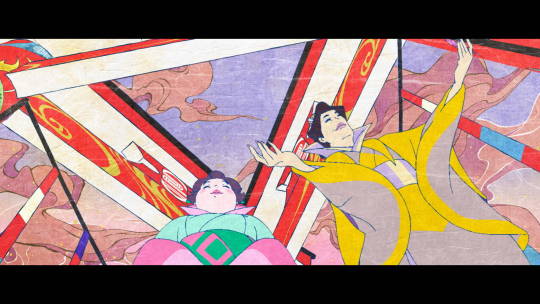
Indeed, Awashima, Utayama's subordinate, is implied to be the Karakasa's next victim:

Next up on the hit list is Utayama, whose downfall being plotted by both human and now supernatural entities alike. Did you notice that despite her otherwise youthful appearance, her hands are almost as withered as the corpse's?


After these authority figures are deposed, what can the Karakasa do with this boiling anger? As the manifestation of these women's jealous grudges, it becomes greedy. It wants more.
It turns to the women, destroying the parts of themselves that Tenshi finds valuable - a twisted act of rebellion to "free" the women from the ooku's grasp.
Then, ever hungry for more, it turns to innocent bystanders. If the women of the ooku have to lose everything they hold dear, so does everybody else who idly let this happen.
In summary, in addition to manifesting as a terrifying force of nature, the Karakasa wishes to consume the life force - the thing that is universally precious - out of everyone.
34 notes
·
View notes
Text

I have the same burning question. I think maybe it's not just the ceiling but the entire concept of "above." In "Umi Bozu," the "eye" that separated from Genkei appeared as a giant eye overhead, and in "Bakeneko" #2, Setsuko fell from above when she first appeared as part of the mononoke.
I think circle/eye shapes often appear in this context? There's Genkei's eye, and the guy in "Zashiki Warashi" was pulled into an eye-shaped ceiling fixture. Awashima was hanging above a circular design on the floor. Yahei falls from something rectangular that I think might be a skylight, and there's a circular heron design on the floor right below:

Maybe it has something to do with the "higher perspective" concept? Asa and Utayama talk about it in Karakasa, and Moriya, Setsuko's killer, mentioned it in "Bakeneko" #2:

Maybe the seeking of or belief in this "higher position" is related to the creation of the mononoke?
I have no solid ideas at present, but please enjoy these screenshots of Kusu's very emotional reaction to Yahei's death:



#screencaps#theory#I didn't take note of whether mugitani fell from or onto a circular thing#there may be other instances I've missed too#I definitely think there's something behind the ceiling kills though
1K notes
·
View notes